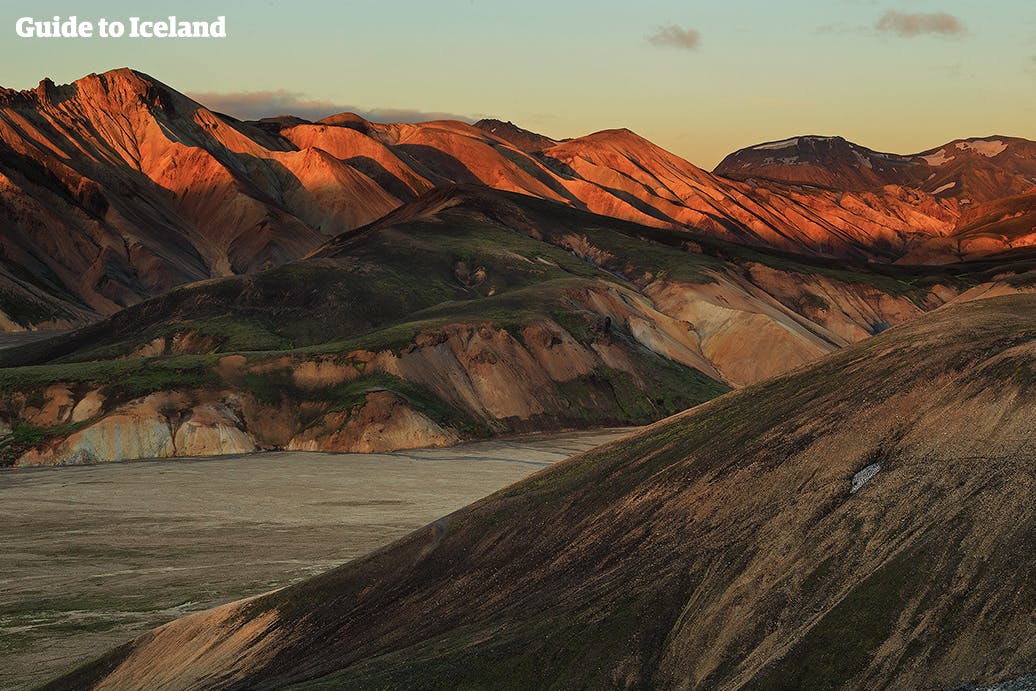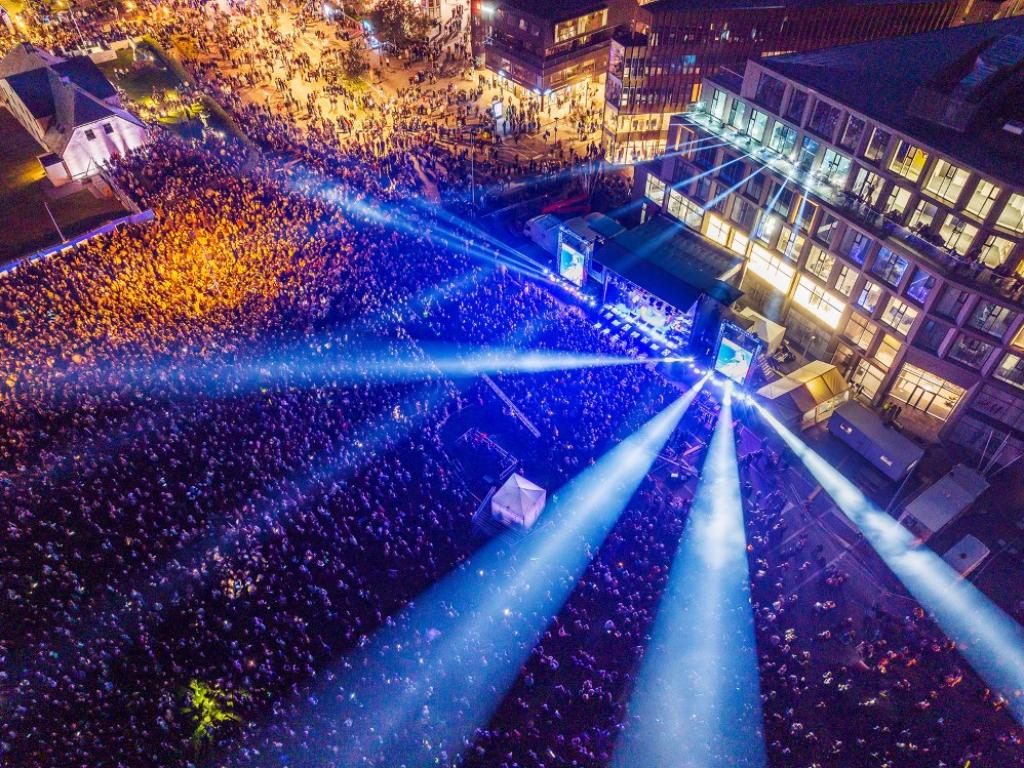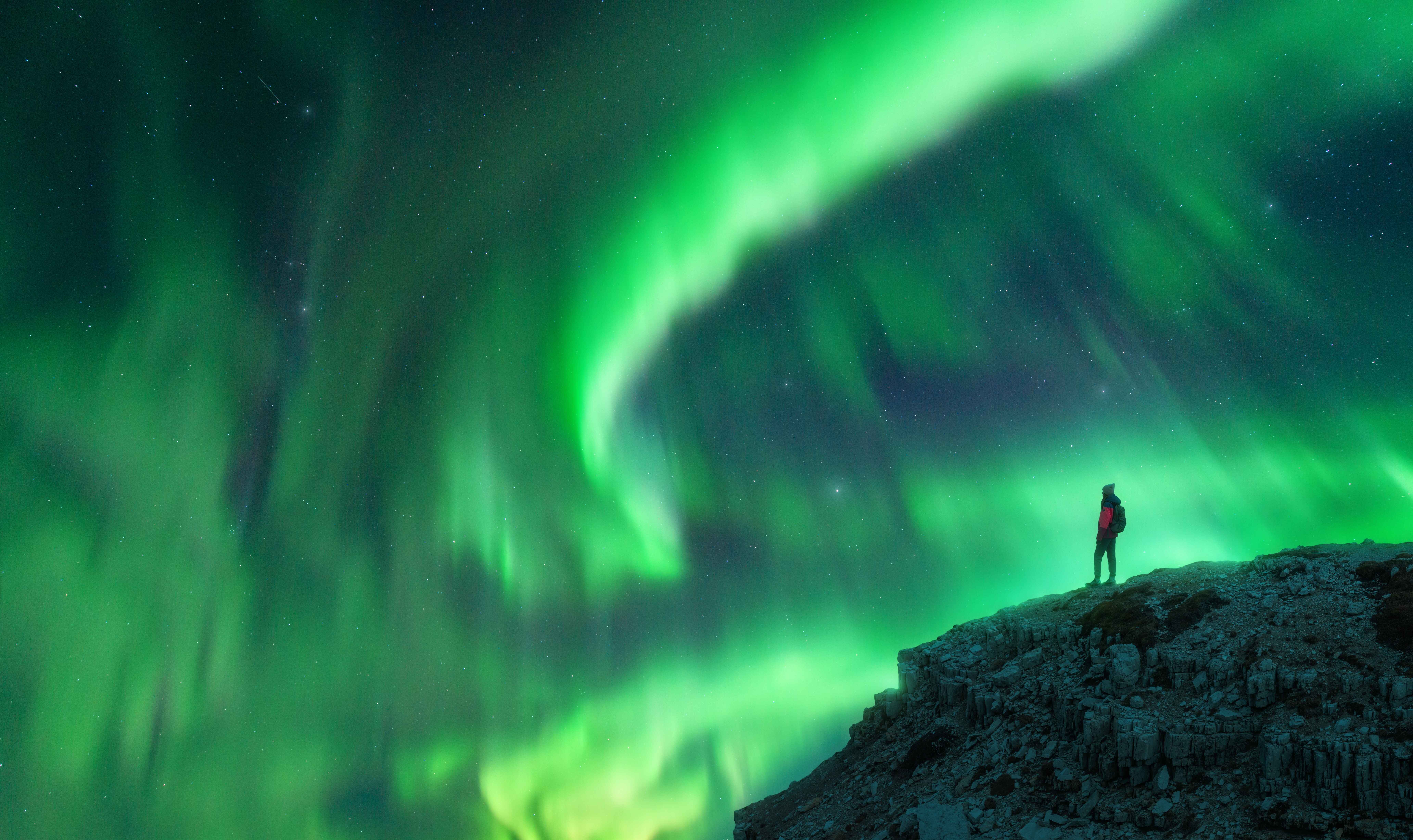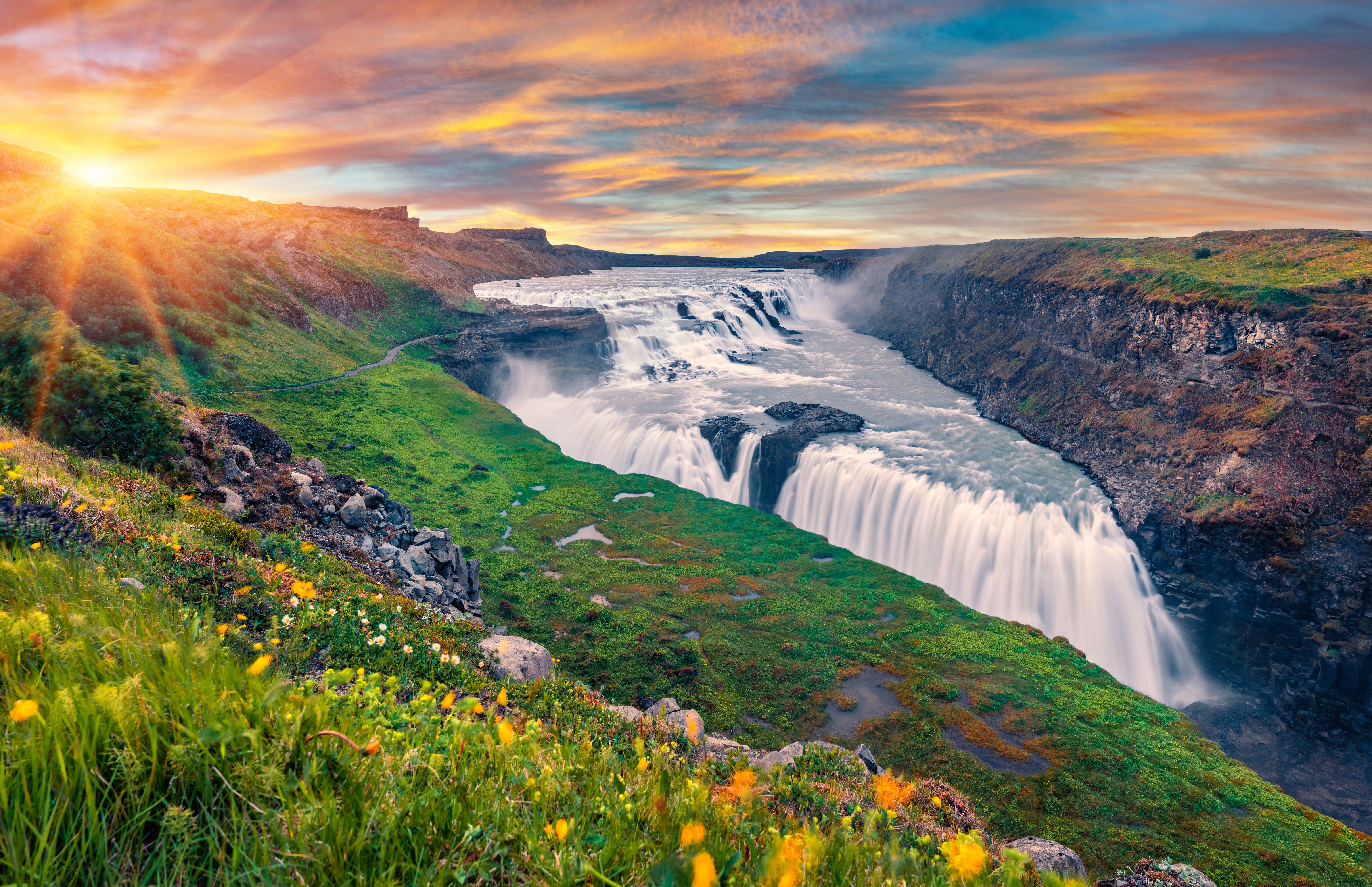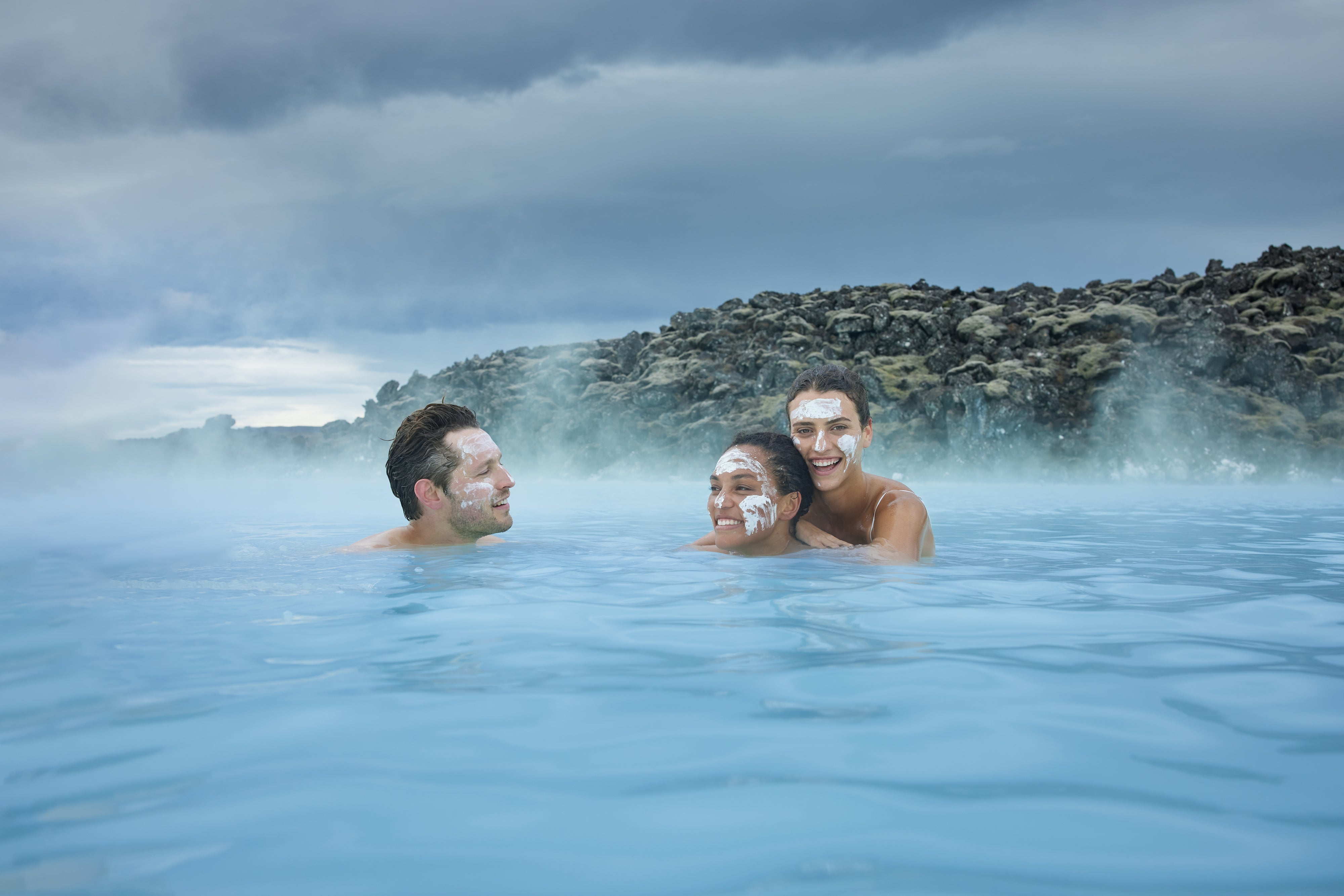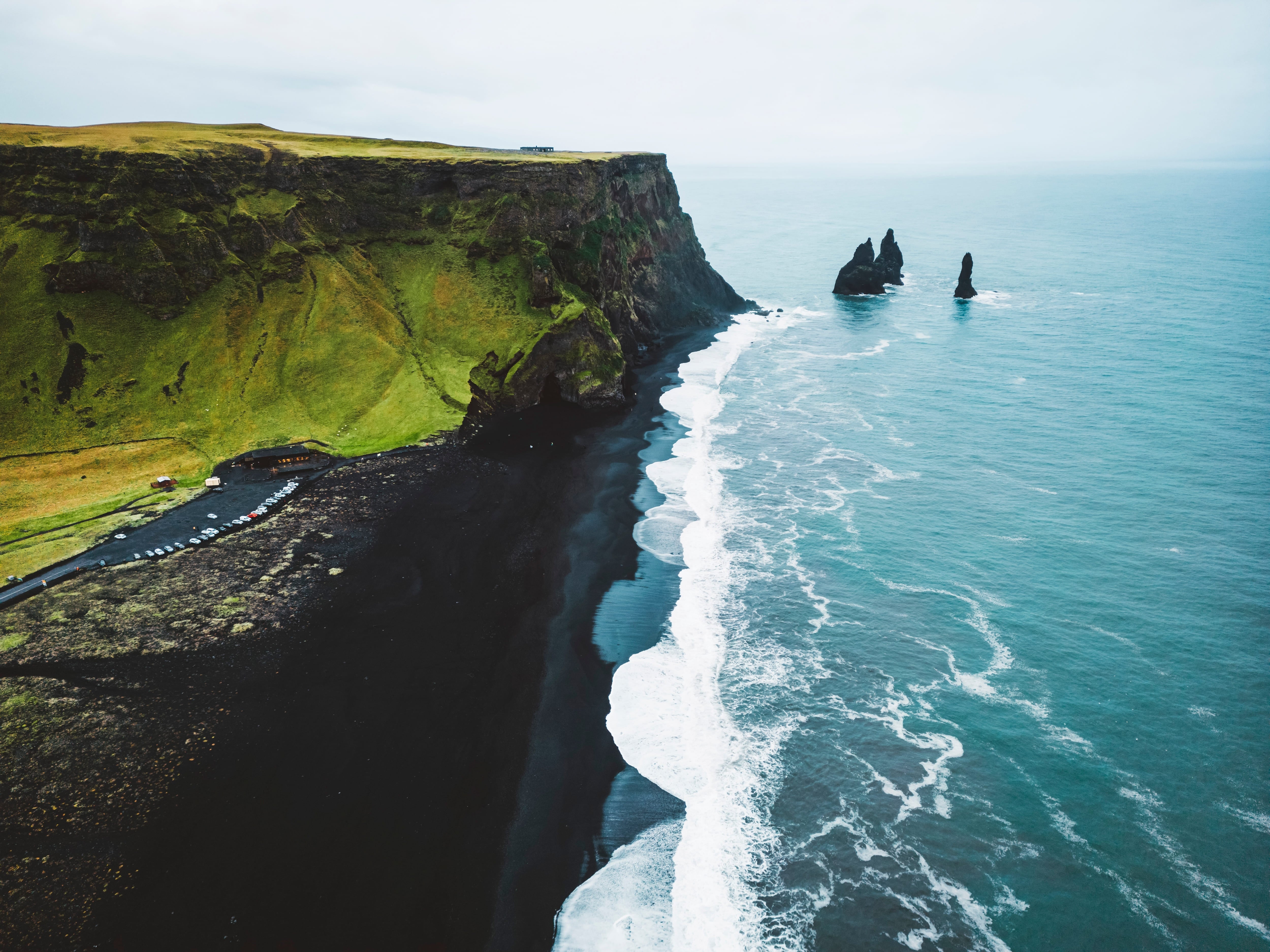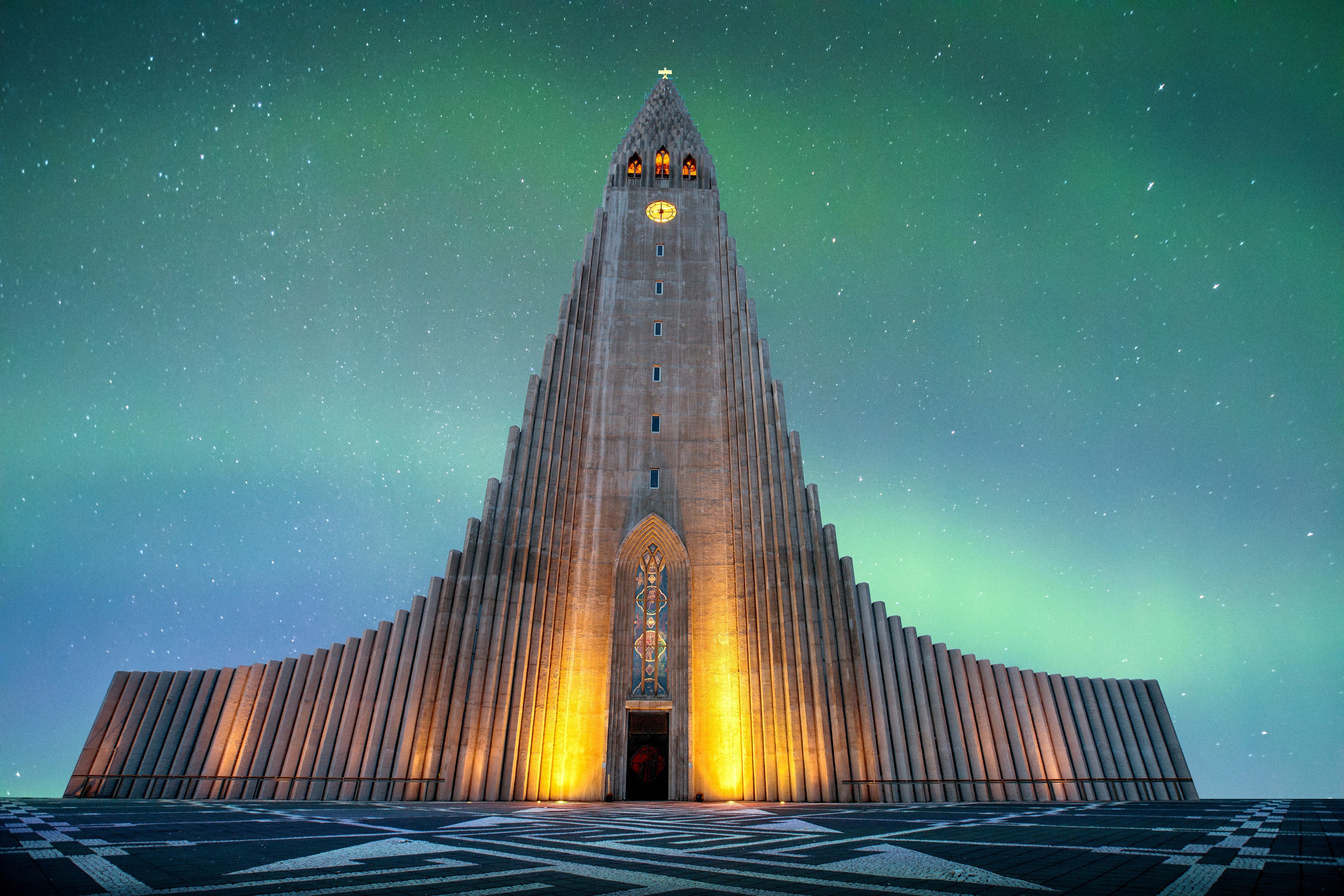
Embarking on a glacier hike in Iceland is an adventure like no other that promises stunning landscapes and an encounter with nature's raw beauty up close. Covering over 11% of the country's surface, there are many glaciers to explore in Iceland. You could visit them on guided glacier tours starting in Reykjavik, or maybe you prefer renting a car to get to start your tour on location. You can even find accommodation in Iceland with a view of a glacier right from your room!
One of the keys to enjoying a glacier hike lies in preparation, especially when it comes to choosing the right attire. Icelandic weather is notoriously unpredictable, with conditions that can shift from clear skies to storms in a matter of minutes.
Why You Can Trust Our Content
Guide to Iceland is the most trusted travel platform in Iceland, helping millions of visitors each year. All our content is written and reviewed by local experts who are deeply familiar with Iceland. You can count on us for accurate, up-to-date, and trustworthy travel advice.
Therefore, dressing appropriately is not just a matter of comfort but of safety as well when exploring glaciers in Iceland. You'll want to go for reliable brands like 66°North that specialize in Icelandic conditions.
Whether you're a seasoned hiker or a novice eager to explore icy wonders, knowing what to wear on a glacier hike in Iceland is essential for safely experiencing this majestic terrain.
- Check out our Ultimate Guide To Glacier Tours in Iceland
- Going ice caving? See our guide on What to Wear for Ice Caving in Iceland
What to Wear for Glacier Hikes in Iceland
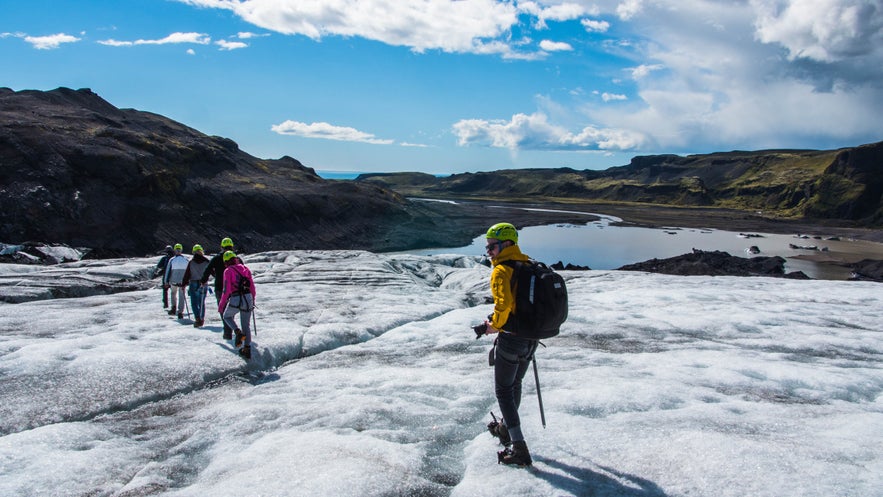
The most common advice you'll hear when it comes to what to wear in Iceland is to layer your clothing. This means dressing in several layers, each of which has a specific function, with the whole system working together to provide comfort and protection in a wide range of weather conditions.
Layering is especially important during activities like glacier hikes, where temperatures are low and conditions can change quickly. One of the biggest advantages of this approach is flexibility. You can add or remove layers as needed to adapt to changes in the weather or your activity level. It is always better to take off a layer you do not need than to wish you had one when the wind picks up.
Let's get into the basics of each layer.
Base Layer Clothing for Glacier Hikes in Iceland
The base layer is your first line of defense against Iceland’s cold. Worn closest to the skin, it should fit snugly, wick away sweat, and keep you dry. The best choices are merino wool or synthetic fabrics like polyester, which insulate well and dry quickly.
Skip cotton as it traps moisture and makes you cold. Instead, pack long-sleeve thermal tops and leggings. Merino wool tights or a Polartec top give reliable warmth, while thermal underwear keeps you comfortable even in snow and icy rain.
Mid Layer Clothing for Glacier Hikes in Iceland
The mid layer provides insulation by trapping warm air close to your body. It should balance warmth with breathability so you stay comfortable during physical activity. Fleece, wool sweaters, and insulated jackets, whether down or synthetic, are all excellent choices thanks to their warmth-to-weight ratio.
Choose lightweight, flexible pieces rather than bulky garments that restrict movement. A zip-up fleece or a thin insulated option, such as a Neo Shell jacket, works well when you need mobility, while a wool sweater or heavier down jacket provides extra warmth in colder conditions.
For your legs, water-resistant hiking trousers with a light fleece lining are ideal, and in very cold weather, ski trousers or insulated shells add extra protection.
Outer Layer Clothing for Glacier Hikes in Iceland
The outer layer is your protective shell against wind, rain, and snow. It should be waterproof and windproof to shield you from the elements, yet breathable enough to release moisture from inside so you do not overheat during activity. Materials like Gore-Tex are ideal, but any high-quality fabric that balances protection and breathability will work.
A waterproof jacket and pants are essential. Choose lightweight, durable pieces for flexibility, or go for a heavier windproof parka in extreme cold. A down jacket can also serve as an outer layer in milder conditions, but make sure it has some weather resistance. For maximum protection, pair your jacket with waterproof trousers or salopettes to keep out moisture and wind.
Footwear and Accessories for Glacier Hiking in Iceland
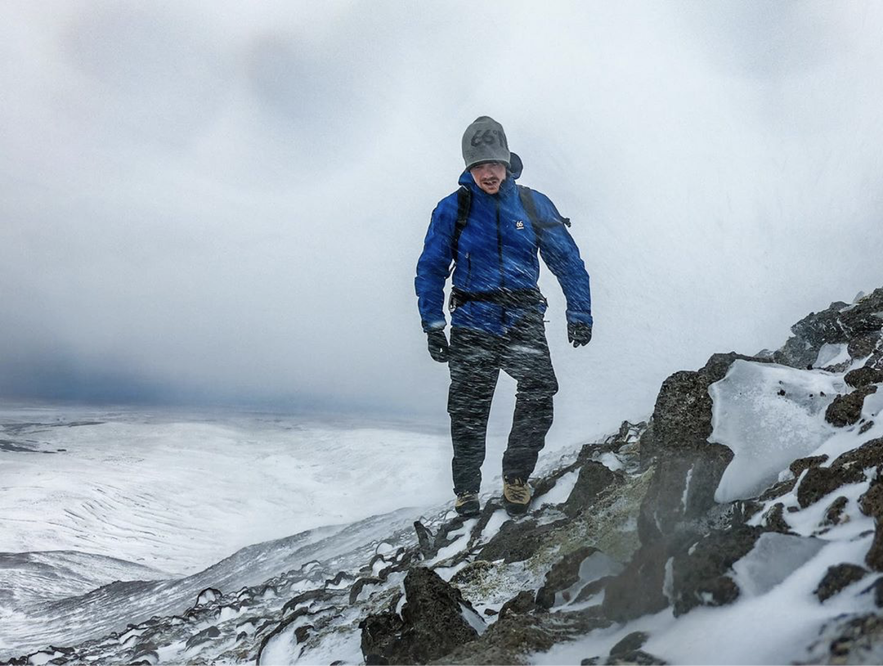
Footwear for Glacier Hikes
Sturdy, waterproof glacier hiking boots with strong ankle support are essential for glacier hikes. They protect your feet, reduce the risk of twists or sprains, and provide the stability you need on icy terrain.
High-top boots are best because they give extra ankle protection and prevent injuries. Look for durable soles with good grip that can handle crampons, which tours typically provide to secure your footing on the ice.
Insulation is just as important as traction. Choose boots designed for cold conditions to keep your feet warm and dry, and wear thick wool socks for added warmth and blister prevention. Wool wicks moisture better than cotton or synthetics, keeping your feet comfortable during long hikes. If you do not have suitable footwear, you can rent hiking boots and get rental crampons in Iceland.
Hats and Scarves
Protecting your head, hands, and neck is just as important as layering your clothing. A warm knit beanie or thermal hat that covers your ears will help prevent heat loss. Pair it with a neck gaiter, buff, or scarf to shield against cold winds.
Glacier Gloves
Waterproof and insulated glacier gloves are essential to protect your hands from cold and wet conditions. They should also provide a secure grip so you can hold equipment safely on the ice.
Bring lighter gloves for summer hikes and thicker insulated ones for winter. Choose flexible materials that allow movement but still block wind and moisture. Always keep an extra pair in case your first pair gets wet, since dry gloves are critical for staying warm and comfortable on a glacier.
Glacier Sunglasses
Glacier sunglasses are essential on a glacier hike because sunlight reflecting off ice and snow can be blinding and harmful to your eyes. Choose a pair with proper UV protection to reduce glare and prevent eye damage. Since UV rays are also intense on glaciers, apply sunscreen to exposed skin to avoid burns, even in winter or cloudy conditions.
Hiking Gear
Specialized glacier equipment like helmets, harnesses, crampons, and ice axes is usually provided in most tours. These items are essential for safety and traction on the ice, and guides will show you how to use them properly. You only need to bring your own clothing layers, boots, and personal accessories, while the technical gear is supplied on-site.
Best Time to Go Glacier Hiking in Iceland
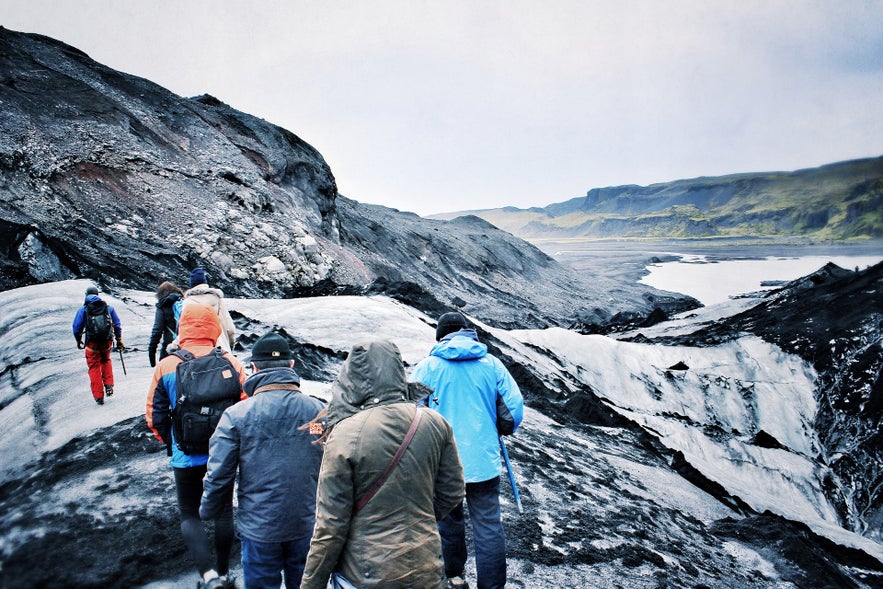
Glacier hiking in Iceland is possible year-round, but each season offers a different experience. For the most accessible conditions and longer daylight hours, the best time to go glacier hiking in Iceland is from May to September. During these months, the weather in Iceland tends to be milder and trails are easier to navigate.
If you plan to visit Iceland in winter, glacier hiking takes on a completely different atmosphere. The landscapes are blanketed in snow, the ice glows in deeper shades of blue, and guided tours often include the chance to explore natural ice caves that form only during the colder months.
Glacier Hiking in Iceland in Summer
Glacier hiking in Iceland in summer, from June to September, is the most popular and beginner-friendly time to go. The weather is mild, with temperatures averaging 50 to 59 F (10 to 15 C), and daylight can last up to 20 hours in June and July.
Access is easier, and nearly all glacier tours are in full operation, from short introductory hikes to full-day expeditions that can include activities like boat rides or ATV adventures.
The ice tends to appear more white or gray than blue in summer because surface layers collect volcanic ash and dirt. Ice caves are usually closed due to melting, but conditions are stable and hiking is comfortable. Summer is perfect for travelers who want long days, good visibility, and plenty of tour options.
Glacier Hiking in Iceland in Winter
Winter brings out Iceland’s glaciers at their most vivid and photogenic. The ice becomes harder, clearer, and often turns a deep, brilliant blue. This is also when natural ice caves form and open to the public, offering one of the most unique experiences in Iceland. Snow-dusted landscapes and small group tours add to the sense of solitude and beauty.
In winter, you can combine glacier hikes with ice caving and northern lights tours for a truly unforgettable Icelandic adventure. Spend your days exploring glittering ice formations and your nights watching the aurora illuminate the frozen landscape.
While temperatures are colder, usually around 14 to 32 F (-10 to 0 C), guided glacier hikes remain safe with proper clothing and equipment.
Glacier Hiking in Iceland in Spring and Autumn
Spring and autumn are excellent choices for travelers who want fewer people on the trails and balanced conditions. The temperatures are cooler than in summer but milder than during winter in Iceland, making the hike pleasant without being too cold. Rain and melting snow often wash away surface dirt, revealing cleaner and brighter ice beneath.
Tour availability can be more limited than in summer, but the quieter atmosphere and fresh glacier surfaces make these months a favorite for many. Spring and autumn offer a good mix of manageable weather, moderate pricing, and photogenic landscapes.
Best Places to Go Glacier Hiking in Iceland
In Iceland, several glaciers offer guided tours, providing visitors with safe and informative ways to explore these magnificent ice formations. Here are some of the most popular glaciers where guided tours are available:
Skaftafell Nature Reserve

Skaftafell is a nature reserve in Vatnajokull National Park and one of the best places to go glacier hiking in Iceland. Known for its striking natural beauty and diverse terrain, it features the famous basalt columns of Svartifoss Waterfall and sits beneath Vatnajokull, Europe’s largest glacier.
Over time, the ice has carved deep valleys and dramatic ridges, shaping nearby landmarks such as the Jokulsarlon Glacier Lagoon.
Glacier hikes in Skaftafell range from short, easy walks to full-day climbs across crevassed ice, making them suitable for both beginners and experienced hikers. If you plan to go, this 5-hour glacier hiking tour of Skaftatell offers the perfect balance of adventure and scenery. You’ll explore vivid blue ice formations, navigate deep crevasses, and take in sweeping views over black sand plains and surrounding peaks.
Many also visit nearby attractions like Svartifoss, Diamond Beach, and Jokulsarlon Glacier Lagoon. With year-round tours, excellent facilities, and breathtaking views, Skaftafell remains one of Iceland’s most rewarding glacier hiking destinations.
Solheimajokull Glacier
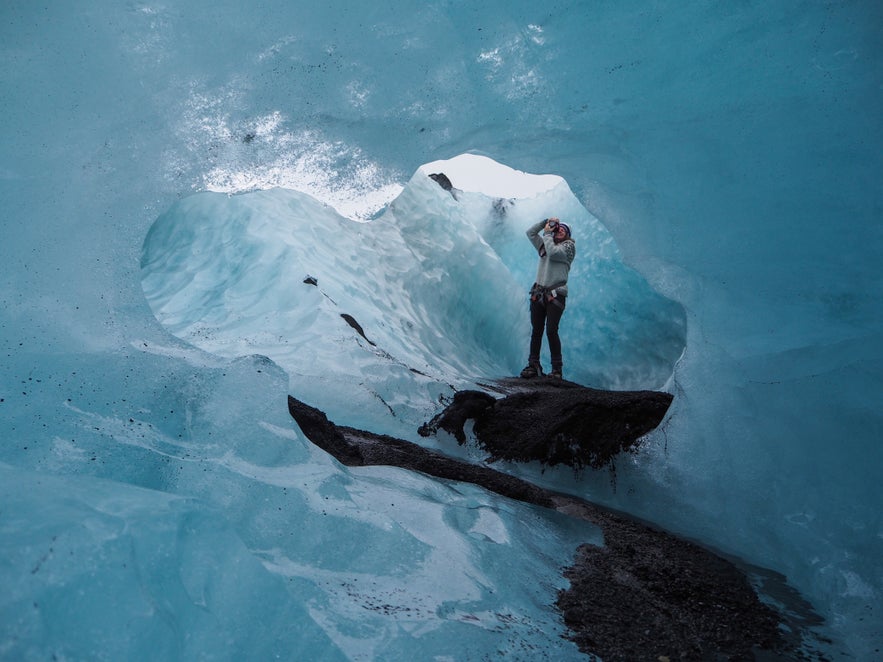
Solheimajokull is an outlet glacier of the Myrdalsjokull ice cap on Iceland’s South Coast, located between the waterfalls of Skogafoss and Seljalandsfoss and close to the village of Vik. Stretching about 5 miles long and just over a mile wide (8 kilometers long and 2 kilometers wide), it’s one of the most accessible glaciers in Iceland. It's also a highlight in many South Coast trips in Iceland.
The glacier is around 98 miles (158 kilometers) from Reykjavik, about a two-and-a-half-hour drive along the Ring Road. From the parking area, it’s only a short walk to the glacier’s edge, where most guided tours begin.
The 3-hour glacier hike on Solheimajokull is one of the most popular ways to explore the area. Led by certified guides, the hike takes you across blue ice ridges, narrow crevasses, and streaks of black volcanic ash left behind by eruptions from the nearby Katla and Eyjafjallajokull volcanoes.
You’ll be equipped with crampons, helmets, and ice axes, and learn how Iceland’s glaciers are shaped by both fire and ice. The hike is moderately challenging but suitable for most travelers with average fitness.
Solheimajokull’s location also makes it easy to combine with other highlights along the South Coast, such as Reynisfjara Black Sand Beach, Dyrholaey, and Skogafoss. With its accessibility, dramatic scenery, and well-guided tours, Solheimajokull is one of the best places in Iceland to experience glacier hiking up close.
Snaefellsjokull Glacier
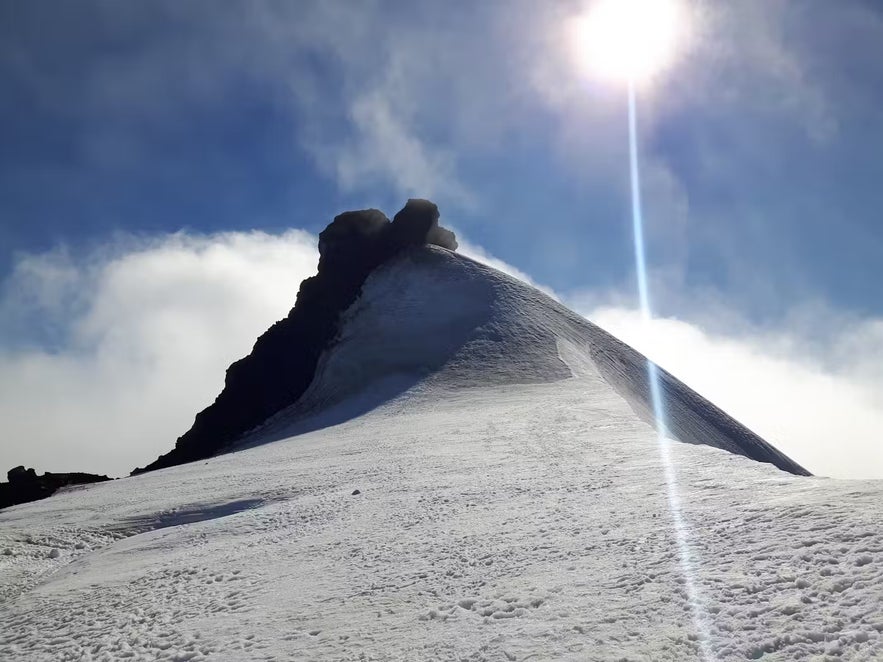
Snaefellsjokull is one of Iceland’s most iconic glaciers, located at the tip of the Snaefellsnes Peninsula in western Iceland. It sits atop a 700,000-year-old stratovolcano that last erupted around 350 AD and has been immortalized as the gateway to the center of the Earth in Jules Verne’s "Journey to the Center of the Earth."
The glacier lies about 114 miles (183 kilometers) from Reykjavik, with the drive taking around three hours along scenic coastal roads. Snaefellsjokull National Park surrounds the glacier, offering a variety of natural attractions, including the basalt cliffs of Londrangar, the Vatnshellir Lava Cave, and the historic fishing villages of Arnarstapi and Hellnar.
The glacier hike tour of Snaefellsjokull is one of the most rewarding yet demanding glacier hikes in Iceland. The climb typically begins near Arnarstapi and takes about five to six hours round trip, crossing gravel slopes before reaching the glacier’s base. The hike is moderately challenging and suitable for those with good fitness.
If you prefer a less strenuous way to experience Snaefellsjokull, you can join a snowcat tour that takes you to the top of the glacier. From there, you can enjoy a short walk on the ice and take in panoramic views without the demanding ascent.
FAQs on What To Wear for Glacier Hiking in Iceland
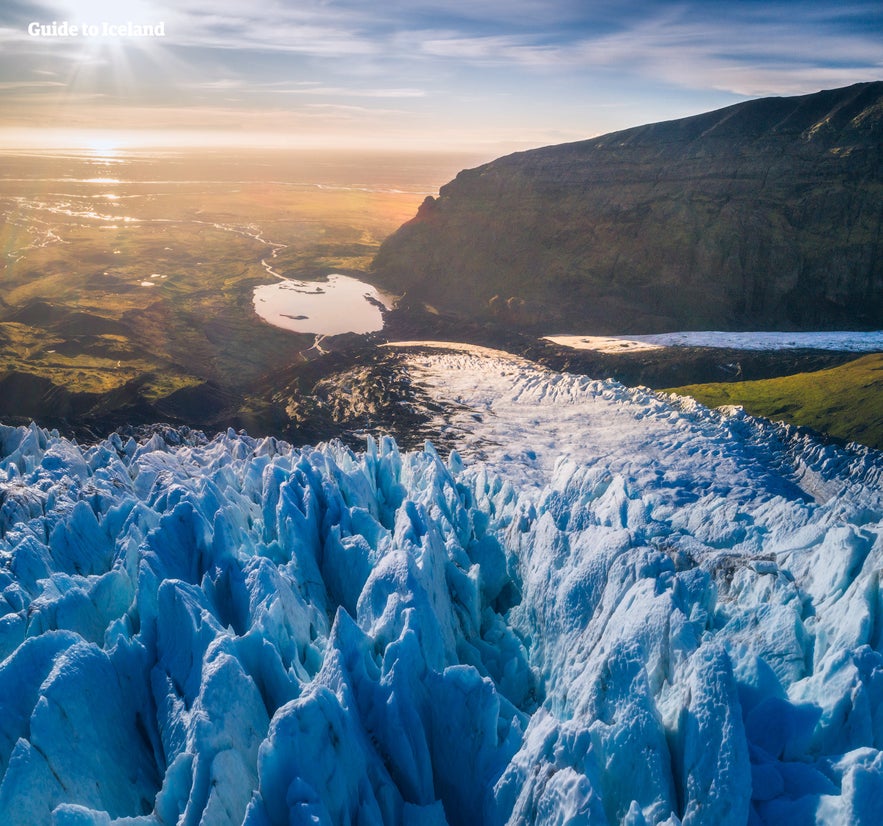 Here are answers to some of the most frequently asked questions about what to wear for glacier hiking in Iceland.
Here are answers to some of the most frequently asked questions about what to wear for glacier hiking in Iceland.
What kind of footwear should I wear for glacier hiking?
Wear sturdy, waterproof glacier hiking boots with good ankle support. The soles should be stiff enough to fit crampons, which are essential for traction on the ice. Most glacier tours provide crampons, ice axes, helmets, and other necessary equipment, but proper hiking boots are usually required.
How to dress for a glacier hike in Iceland?
To stay warm while glacier hiking in Iceland, use a proper layering system. A breathable base layer draws moisture away from your skin, a fleece or down mid layer traps heat, and a waterproof outer layer protects against snow and wind. Avoid cotton, which traps moisture and can make you cold. Bring an extra mid-layer or lightweight down jacket for added warmth during breaks or colder weather.
Are gloves and hats necessary for glacier hiking?
Yes, insulated and waterproof glacier gloves are essential to protect your hands from the cold and wet conditions. A warm hat that covers your ears will help retain body heat and protect against cold winds.
What is the best time to go glacier hiking in Iceland?
May to September is generally considered the best time to go glacier hiking in Iceland as the days are longer, the temperature is warmer, and the weather is less unpredictable. Even still, temperatures on the glacier can be low in the summer, and weather conditions can change rapidly.
What to pack for hiking on glaciers in Iceland?
Bring waterproof outerwear, a warm hat, gloves, and an extra pair of socks. Sunglasses and sunscreen are also essential, as sunlight reflecting off the ice can cause glare and UV exposure even in winter. Carry a small backpack for water, snacks, and any extra layers you may need during the hike.
Hopefully, we've answered most of your questions about what to wear when glacier hiking in Iceland. Do you have experience with glacier hiking in Iceland? Let us know in the comments!



